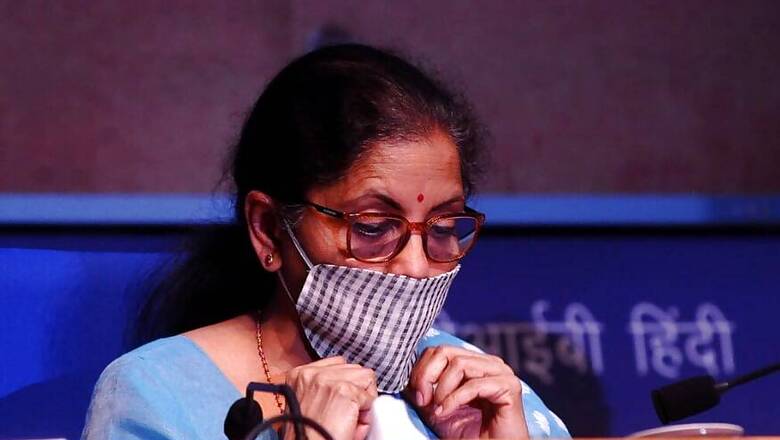
views
The collapse of IL&FS (Infrastructure Leasing and Financial Services) two years ago led to a crisis in India’s financial sector, with most other non-banking finance companies (NBFCs) suddenly also finding themselves at a crossroads. The biggest trouble brought on by the collapse of IL&FS was a near total liquidity squeeze.
NBFCs were neither able to continue lending nor were they able to raise funds. An NBFC usually borrows funds from a bank or sells commercial paper to raise money, which is then provided on credit to small businesses, workers in the unorganised sector and to individual customers. This segment of loan takers is ineligible or unable to approach regular banks for credit, so the role played by NBFCs in keeping the vast unorganised sector financed cannot be belittled.
IL&FS was an NBFC giant and as it began defaulting on its own repayments, it led to a domino effect on smaller NBFCs and ultimately on the entire sector, resulting in liquidity flight. IL&FS’ defaults also spelt trouble for its investors such as banks, insurance companies and mutual funds, thus widening the default contagion.
In this backdrop, the government’s decision to offer a Rs 75,000 crore package to the NBFC sector should be a welcome step, since it stresses on easing the sector’s liquidity concerns. This package could also actually push banks to keep aside their risk aversion and resume lending to NBFCs.
The only problem is the modest size of the package and the apprehension that, with loan takers in the unorganized sector anyway either jobless or absent from work due to Covid-19 fallout, there is a bigger fear of defaults to NBFC loans than of inadequate liquidity in the system.
A part of this worry has been addressed by the government through a credit guarantee line to Micro, Small and Medium Enterprises (MSMEs), but the risk persists. The first tranche of the mega Rs 20 lakh crore stimulus package, announced first by Prime Minister Narendra Modi on Tuesday, now stands at nearly Rs 5.85 lakh crore, with most measures aimed at improving liquidity or cash in the system. But some economists have pointed out that the fiscal impact on the government's budget would be less than Rs 25,000 crore.
This first tranche, announced by Finance Minister Nirmala Sitharaman on Wednesday, comes to about 2.9 per cent of India’s GDP and the troubled NBFC sector will get about 13% of the total allocation announced so far: a liquidity scheme worth Rs 30,000 crore and extension of partial guarantee scheme worth Rs 45,000 crore.
Why the package would help the beleaguered NBFCs becomes clear from what a Mumbai-based brokerage observed about the goings on in the sector in March (a nationwide lockdown was suddenly imposed in the last week of March, causing a total pause in all economic activities).
This March, the growth in NBFC loans was 28 per cent over March 2019 and 16 per cent from February this year. This was in sharp contrast to the 22 per cent year-on-year loan growth seen in February and a contraction of 4 per cent month-on-month.
Such high growth in NBFC loans (from banks) in March was due to a crunch in the debt market so that NBFCs switched to bank loans from bonds even before the Covid-19 lockdown started in the last week of March.
“Strong NBFCs, such as HDFC and HDB Financial Services, and weak NBFCs drew down on their bank lines in March. We believe state banks lent more to NBFCs than private ones. Sharp growth in NBFC loans, especially to weaker NBFCs, is credit negative for banks as the NBFC sector has been at risk, following the IL&FS crisis. The lockdown will likely lead to increased risk for NBFCs, due to moratorium on borrower loans, leading to high credit cost, weak loan growth and funding pressures. The real impact of the lockdown on retail loan growth will be seen only in April,” this brokerage said.
As explained earlier, there are two parts to the package. The Rs 30,000 crore special liquidity scheme allows investments in primary and secondary market transactions in investment grade instruments of NBFCs. These securities are to be fully guaranteed by the government.
An analysis by ratings agency CARE Ratings said this will be a contingent liability of the government and will thus help NBFCs and the bond market “to an extent, as deals in lower rated investment grade paper will be facilitated.”
On the second part of the package, which involves Rs 45,000 crore liquidity infusion through a partial credit guarantee scheme, CARE said this was merely “an extension of the existing scheme, where the first 20% of loss is already borne by the government. AA rated and below including unrated papers to be included. A contingent liability for the government, which will help NBFCs nevertheless. It needs to be seen how it works as PCE has not been too successful in the past.”
Yet another Mumbai-based brokerage noted that the package is modest for the NBFC sector. “As in the case of MSMEs, the stimulus measures for NBFCs too have provided 100% loan guarantee for Rs 300 billion fund infusion against investment grade papers (MFs too eligible for this) but 20% guarantee for Rs 450 billion (Rs 45,000 crore) fund infusion against any type (including sub-investment grade and non-rated) papers. Apart from the relatively modest quantum of the schemes, banks may end up funding against highly rated papers depriving funding opportunities for smaller NBFCs”.
Meanwhile, the Federation of Indian Chambers of Commerce and Industry (Ficci) noted that that the funds allotted earlier by the RBI through banks were not reaching NBFCs because of risk aversion. “With today’s announcements, we hope the perceived credit risk among banks with regard to NBFCs and HFCs will come down and the flow of funds will resume to NBFCs, including those that have investment grade paper and not just triple A rated instruments”.
Also, the Rs 3 lakh crore collateral free automatic loans to MSMEs – another announcement by the FM on Wednesday as part of the stimulus package – should help galvanise the NBFC sector.




















Comments
0 comment